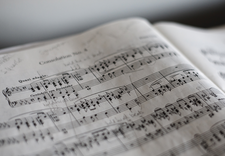The MusE 4 MIDI sequencer
Music Maker

© Photo by Marius Masalar on Unsplash
MusE, a digital audio workstation, offers a free software solution for MIDI projects on Linux.
If you want to create music with free software on Linux, you can choose from a few digital audio workstations (DAWs). If you play live music, Ardour is usually a good choice. However, if you primarily compose music in MIDI notation with virtual or hardware synthesizers, you may want to consider MusE 4. Of the free DAWs for Linux, MusE 4 puts the most emphasis on full support for the many methods and standards that have found their way into MIDI technology over the past 50 years.
Where to Get It
A few years ago, MusE was in the standard feature set of popular distributions related to music production, which is true of Ubuntu Studio (used to test MusE in our lab). Today, the major distributions often only have an outdated version in their package sources because work on MusE has been pretty slow at times.
To get the latest version, you can download an AppImage from the MusE website [1]. AppImages (and containers like them) are not necessarily the perfect solution for real-time audio. The elaborate wrapper increases the system load and the compartmentalized image often also prevents correct integration with the JACK audio server and ASLA MIDI. However, the MusE team has done a good job of testing the AppImages very carefully. A tolerable delay at startup time is the only side effect of running MusE from the AppImage. Once Muse4 is running, it responds quickly and integrates into the environment in an exemplary manner.
[...]
Buy this article as PDF
(incl. VAT)
Buy Linux Magazine
Subscribe to our Linux Newsletters
Find Linux and Open Source Jobs
Subscribe to our ADMIN Newsletters
Support Our Work
Linux Magazine content is made possible with support from readers like you. Please consider contributing when you’ve found an article to be beneficial.

News
-
Manjaro 26.0 Primary Desktop Environments Default to Wayland
If you want to stick with X.Org, you'll be limited to the desktop environments you can choose.
-
Mozilla Plans to AI-ify Firefox
With a new CEO in control, Mozilla is doubling down on a strategy of trust, all the while leaning into AI.
-
Gnome Says No to AI-Generated Extensions
If you're a developer wanting to create a new Gnome extension, you'd best set aside that AI code generator, because the extension team will have none of that.
-
Parrot OS Switches to KDE Plasma Desktop
Yet another distro is making the move to the KDE Plasma desktop.
-
TUXEDO Announces Gemini 17
TUXEDO Computers has released the fourth generation of its Gemini laptop with plenty of updates.
-
Two New Distros Adopt Enlightenment
MX Moksha and AV Linux 25 join ranks with Bodhi Linux and embrace the Enlightenment desktop.
-
Solus Linux 4.8 Removes Python 2
Solus Linux 4.8 has been released with the latest Linux kernel, updated desktops, and a key removal.
-
Zorin OS 18 Hits over a Million Downloads
If you doubt Linux isn't gaining popularity, you only have to look at Zorin OS's download numbers.
-
TUXEDO Computers Scraps Snapdragon X1E-Based Laptop
Due to issues with a Snapdragon CPU, TUXEDO Computers has cancelled its plans to release a laptop based on this elite hardware.
-
Debian Unleashes Debian Libre Live
Debian Libre Live keeps your machine free of proprietary software.

